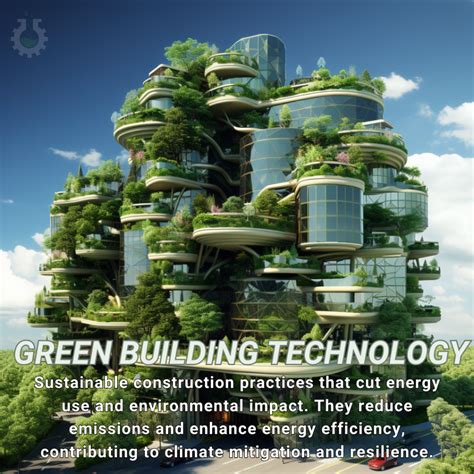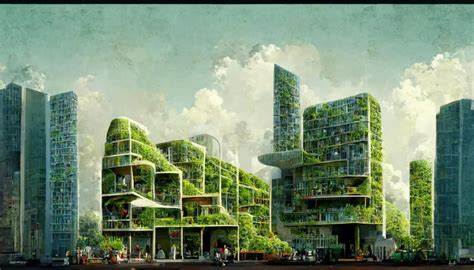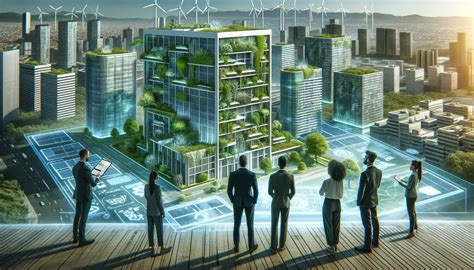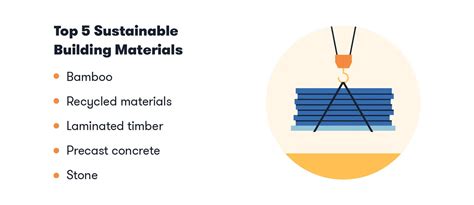Green Building Technologies

The construction industry is witnessing a transformative shift towards sustainable and environmentally conscious practices, and at the forefront of this revolution are green building technologies. These innovative solutions are not merely trends but pivotal steps towards a more sustainable future. Green building technologies offer a comprehensive approach to construction, focusing on energy efficiency, environmental responsibility, and the overall well-being of occupants. This article delves into the world of green building, exploring its significance, the technologies driving this movement, and the profound impact it has on our built environment.
Understanding Green Building: A Paradigm Shift

Green building, often referred to as sustainable or eco-friendly construction, represents a paradigm shift in the way we approach the built environment. It goes beyond traditional construction practices, aiming to minimize the negative environmental impact of buildings while maximizing their efficiency and the health and comfort of their occupants.
The concept of green building is grounded in several key principles. First and foremost is energy efficiency. Green buildings are designed to optimize energy use, reducing the reliance on non-renewable energy sources and minimizing carbon emissions. This is achieved through innovative architectural designs, efficient heating and cooling systems, and the integration of renewable energy technologies.
Another critical aspect of green building is environmental responsibility. This involves the use of sustainable materials, many of which are sourced locally to reduce transportation emissions. Green buildings also prioritize waste reduction, both during construction and throughout the building's lifespan, often incorporating recycling and waste management systems.
Furthermore, green building technologies emphasize occupant well-being. This includes the use of non-toxic materials to improve indoor air quality, the incorporation of natural lighting and ventilation for better comfort and health, and the design of spaces that promote productivity and mental well-being.
Key Green Building Technologies and Innovations

The realm of green building technologies is vast and continually evolving. Here, we explore some of the most prominent and impactful innovations shaping the future of sustainable construction.
Energy-Efficient Building Materials
The choice of building materials is a fundamental aspect of green construction. Materials such as recycled steel, rammed earth, and recycled concrete offer exceptional strength and durability while minimizing environmental impact. For instance, recycled steel is an excellent alternative to traditional steel, reducing the need for new steel production and associated carbon emissions. Similarly, rammed earth walls provide excellent thermal mass, regulating indoor temperatures and reducing the need for excessive heating or cooling.
| Material | Benefits |
|---|---|
| Recycled Steel | Reduces carbon footprint, maintains strength |
| Rammed Earth | Natural insulation, regulates temperature |
| Recycled Concrete | Sustainable, reduces waste, provides durability |

Smart Building Automation Systems
Smart building automation systems are a game-changer in green building. These systems integrate various technologies to optimize energy use and comfort. They can control lighting, temperature, and even window shades based on occupancy and external conditions, ensuring energy is used efficiently.
For instance, a smart system might adjust lighting levels based on natural light availability, turning off unnecessary lights during the day. Similarly, it can regulate temperature by considering external weather conditions and occupancy patterns, ensuring optimal comfort while minimizing energy waste.
Renewable Energy Integration
Integrating renewable energy sources is a cornerstone of green building. Solar panels, wind turbines, and geothermal systems are increasingly being incorporated into building designs. These technologies provide clean, renewable energy, reducing the reliance on fossil fuels and contributing to a more sustainable energy landscape.
Solar panels, in particular, have become a ubiquitous feature of green buildings. They can be seamlessly integrated into building designs, providing electricity for various needs. Similarly, geothermal systems, which harness the stable temperature of the earth, are used for heating and cooling, offering exceptional energy efficiency.
Water Conservation Technologies
Water conservation is another critical focus of green building. Technologies such as rainwater harvesting, greywater recycling, and low-flow fixtures are commonly employed to reduce water consumption. Rainwater harvesting, for instance, collects rainwater for non-potable uses like flushing toilets or irrigation, reducing the demand on municipal water supplies.
Greywater recycling systems treat and reuse water from sinks, showers, and washing machines for non-potable purposes, further reducing water consumption. Additionally, low-flow fixtures, such as faucets and showerheads, reduce water usage without compromising performance, making them an essential component of green building plumbing systems.
The Impact of Green Building Technologies
The adoption of green building technologies has a profound and far-reaching impact on our built environment and the world at large. Here, we explore some of these significant impacts.
Environmental Benefits
Green building technologies significantly reduce the environmental footprint of buildings. By optimizing energy use, reducing waste, and integrating renewable energy sources, green buildings contribute to a significant reduction in carbon emissions and pollution. This, in turn, helps combat climate change and improves air quality, benefiting both the planet and its inhabitants.
Moreover, the use of sustainable materials and construction practices reduces the strain on natural resources, promotes biodiversity, and minimizes the ecological impact of buildings.
Economic Advantages
While the initial investment in green building technologies may be higher, the long-term economic benefits are substantial. Green buildings are energy efficient, resulting in lower operational costs. This is particularly significant for commercial buildings, where energy costs can be a significant expense.
Additionally, green buildings often have higher resale and rental values due to their energy efficiency and environmental credentials. They also attract tenants and employees who value sustainability, leading to increased occupancy rates and improved employee retention.
Health and Well-being
Green buildings are designed with the health and well-being of occupants in mind. The use of non-toxic materials and improved indoor air quality contribute to better health outcomes. Natural lighting and ventilation enhance comfort and productivity, leading to increased job satisfaction and improved mental health.
Furthermore, the energy efficiency and sustainability features of green buildings can reduce stress and promote a sense of environmental responsibility among occupants, contributing to overall well-being.
The Future of Green Building
The future of green building technologies is promising, with ongoing innovations and a growing emphasis on sustainability. As awareness of environmental issues increases, the demand for green buildings is likely to rise. This, coupled with advancements in technology, will drive the development of even more efficient and sustainable building solutions.
One emerging trend is the concept of net-zero energy buildings, which produce as much energy as they consume. This is achieved through a combination of energy-efficient design, renewable energy integration, and smart building systems. Net-zero energy buildings represent the pinnacle of green building, offering a sustainable and self-sufficient approach to construction.
Additionally, the integration of green building technologies with smart city initiatives is gaining momentum. As cities become smarter and more connected, green buildings can play a crucial role in reducing urban energy consumption and carbon emissions, contributing to a more sustainable urban environment.
How do green building technologies benefit the environment?
+Green building technologies significantly reduce a building’s environmental footprint by optimizing energy use, reducing waste, and integrating renewable energy sources. This leads to a substantial reduction in carbon emissions and pollution, helping to combat climate change and improve air quality.
What are the economic advantages of green buildings?
+Green buildings offer long-term economic benefits due to their energy efficiency, resulting in lower operational costs. They also have higher resale and rental values and attract tenants and employees who value sustainability, leading to increased occupancy rates and improved employee retention.
How do green buildings contribute to health and well-being?
+Green buildings are designed to enhance the health and well-being of occupants. They use non-toxic materials and improve indoor air quality, leading to better health outcomes. Natural lighting and ventilation enhance comfort and productivity, contributing to increased job satisfaction and improved mental health.



